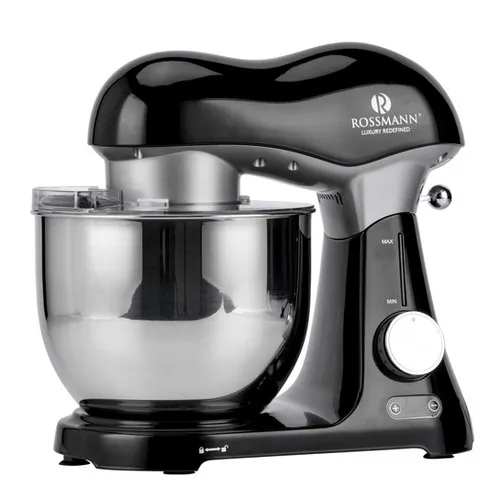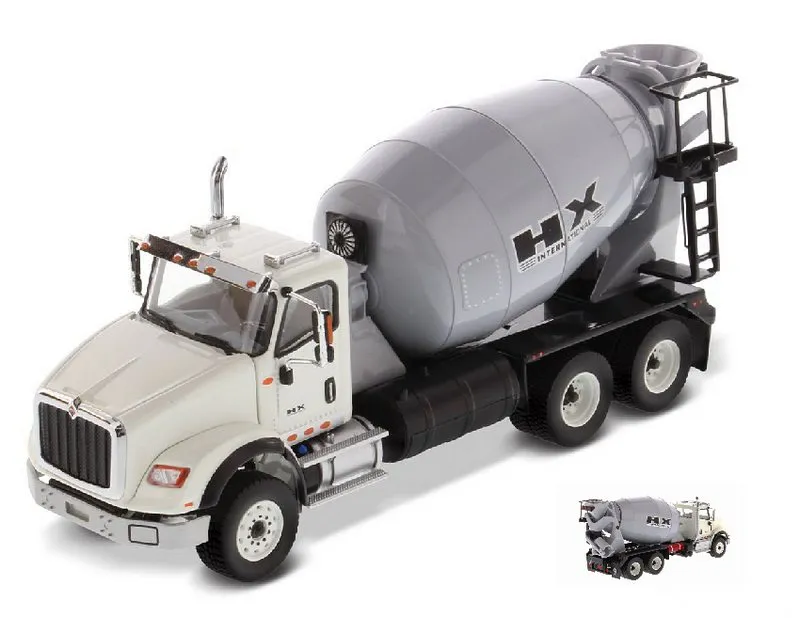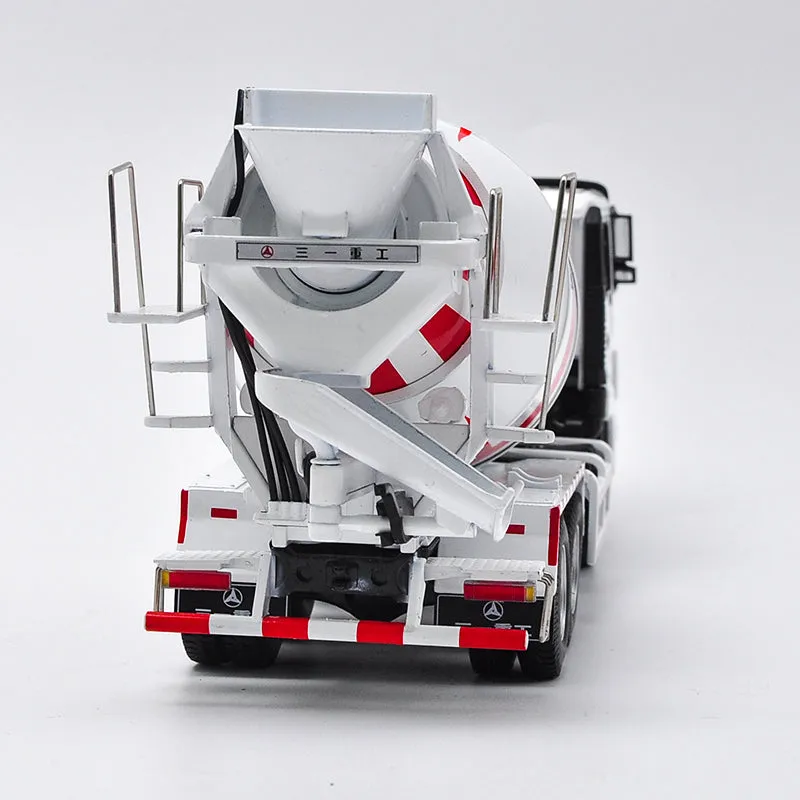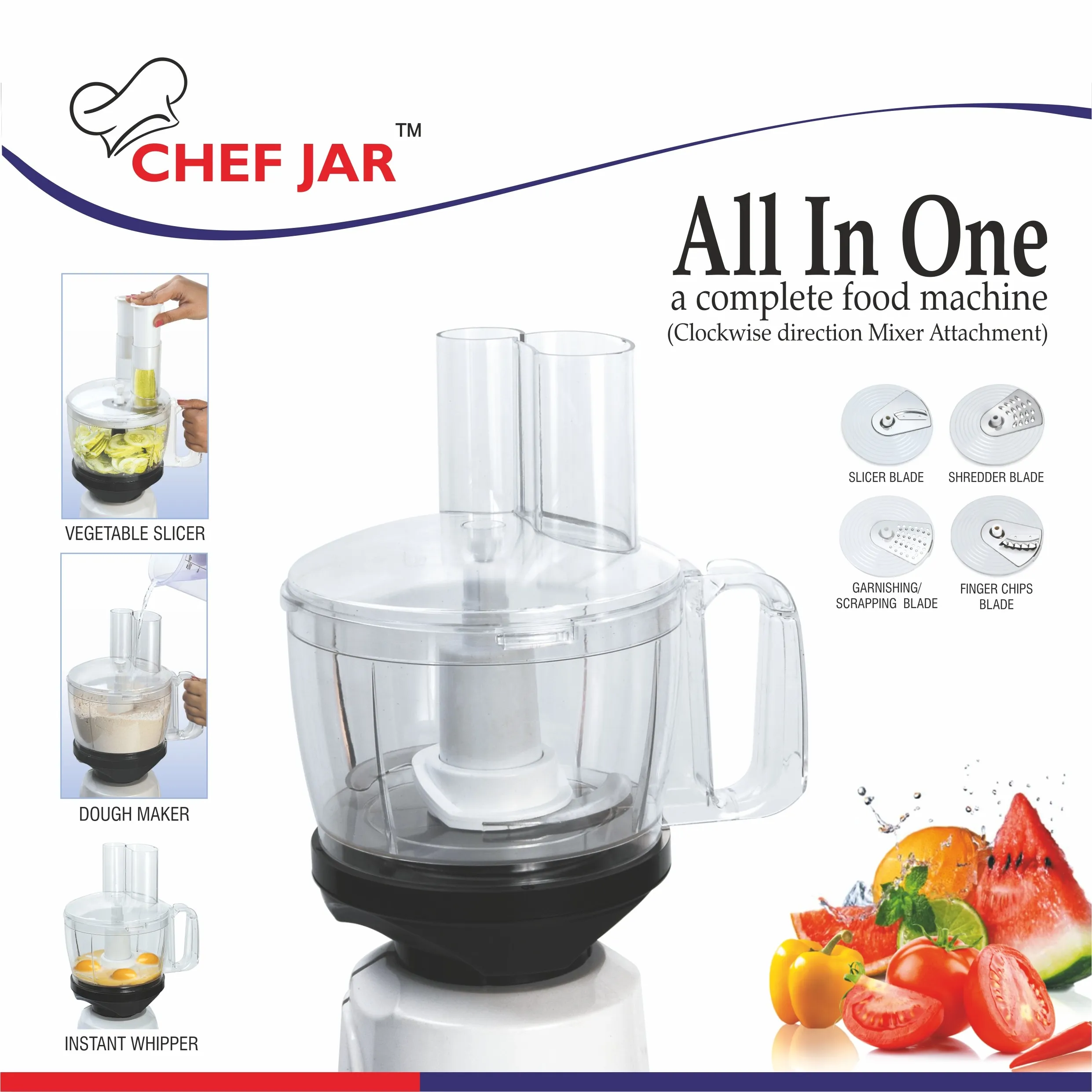Diecast Mixer Top 5 Features You Need
A diecast mixer is a crucial tool for anyone serious about mixing various materials, whether for hobbies, crafts, or professional applications. Choosing the right diecast mixer can significantly impact the quality of your results and the longevity of your equipment. This article explores the top 5 features you should consider when selecting a diecast mixer, ensuring you make an informed decision that aligns with your specific needs. From robust build quality to versatile functionality, understanding these key aspects will help you choose the best diecast mixer for your projects. Selecting the right diecast mixer involves understanding its capabilities and how they match your project demands. Let’s dive into the critical features that define a top-tier diecast mixer.
Durability and Build Quality
The durability and build quality of a diecast mixer are paramount. A robust mixer is an investment that withstands the rigors of frequent use and the challenges of various materials. Look for mixers constructed with high-quality materials designed to endure demanding tasks. This ensures that the mixer not only performs well but also lasts for years, providing consistent and reliable results. A well-built diecast mixer reduces the likelihood of breakdowns, saving you time, money, and frustration. The quality of materials directly impacts the mixer’s ability to handle tough materials, and extended use and a sturdy build also lead to better long-term value. Consider the overall design and craftsmanship. A well-engineered diecast mixer will often feature a balanced design that minimizes vibrations and enhances overall stability during operation, ensuring smooth and efficient mixing.
Material Construction

Material construction is a critical factor in the durability of a diecast mixer. Mixers made from high-quality materials like die-cast aluminum or stainless steel are known for their strength and resistance to wear and tear. These materials can withstand the demands of mixing heavy or abrasive substances, ensuring a long lifespan. The choice of material also affects the mixer’s resistance to corrosion and damage from chemical exposure. For instance, stainless steel mixers are particularly beneficial in environments where they are exposed to moisture or corrosive substances. The construction material also influences the mixer’s overall weight and stability. Heavier mixers are often more stable, reducing the risk of tipping or movement during operation. The material should also be easy to clean and maintain, which is essential for keeping the mixer in optimal condition. Make sure the materials are suitable for your application, particularly regarding any specific chemical compatibility requirements. For example, some materials could react with the substances you are mixing, potentially compromising both the mixture and the equipment.
Rust Resistance
Rust resistance is a vital consideration, especially if the diecast mixer will be used in humid conditions or in applications involving water or corrosive substances. Rust can quickly compromise the structural integrity and performance of the mixer. Look for mixers that are specifically designed to resist rust, often through the use of stainless steel or protective coatings. Stainless steel mixers are a popular choice because of their inherent resistance to rust and corrosion, ensuring they remain in excellent condition even with frequent exposure to moisture. Protective coatings applied to the mixer’s exterior can also provide an added layer of defense against rust. Regular cleaning and maintenance can further help to prevent rust. Always dry your mixer thoroughly after use and avoid leaving it in damp environments. Selecting a rust-resistant diecast mixer extends its lifespan and ensures that it continues to perform efficiently and safely. Proper rust prevention is also critical for maintaining the purity of your mixtures, as rust can contaminate your materials and compromise the quality of your work.
Motor Power and Performance
The motor power and overall performance of a diecast mixer directly impact its efficiency and effectiveness. A robust motor is essential for handling various materials, from light paints to heavy-duty compounds. The motor’s power, measured in watts or horsepower, dictates how easily it can mix materials. Consider the type of projects you will be working on and select a mixer with sufficient power. For demanding applications, a more powerful motor is often required to ensure thorough mixing and prevent motor strain. The motor’s performance is also influenced by its design and cooling system. A well-designed motor will run efficiently, generate less heat, and extend the lifespan of the mixer. High-quality motors are generally designed to handle a wider range of materials and mixing tasks. Examine the motor’s specifications to determine its suitability for your intended uses. Consider a mixer that features overload protection. This feature automatically shuts off the motor if it detects excessive strain, preventing potential damage and increasing safety. Also, consider the motor’s noise level. Some motors operate more quietly than others, which can be a significant factor in a work environment.
RPM and Torque

RPM (revolutions per minute) and torque are critical performance indicators for a diecast mixer. RPM refers to the speed at which the mixing blades rotate, and torque is the rotational force the motor generates. The combination of RPM and torque determines the mixer’s ability to blend materials effectively. Higher RPM is generally suitable for lighter materials and applications requiring rapid mixing, such as paint or thin liquids. In contrast, higher torque is crucial for mixing thicker or denser materials. Look for a mixer with a balance of RPM and torque to handle a wide range of applications. The ability to adjust the RPM is also a key feature. Variable speed settings allow you to fine-tune the mixing process, tailoring the speed to match the specific needs of the material. A mixer with adjustable RPM settings ensures that you have the control necessary to achieve optimal mixing results, preventing splashing and ensuring even consistency. Consider the range of RPM settings the mixer offers. A broader range of settings provides increased versatility and allows you to handle an extensive array of projects. Also, make sure the torque is sufficient for the materials you will be working with. Insufficient torque may cause the motor to stall, hindering the mixing process and potentially damaging the mixer.
Variable Speed Settings
Variable speed settings are a crucial feature for any diecast mixer, offering greater control and versatility in your mixing tasks. These settings allow you to adjust the mixer’s speed to suit the specific material being mixed. This is important because different materials require different mixing speeds to achieve optimal results. With variable speed settings, you can start mixing slowly to avoid splashing, then increase the speed gradually to ensure a thorough blend. This flexibility is particularly useful when working with a variety of materials, from thin liquids to thick pastes. The range of speed settings is also important. A wider range provides more control, allowing you to precisely match the mixing speed to the material. Look for mixers with easy-to-use speed control mechanisms, such as a dial or digital interface. These make it simple to adjust the speed quickly and accurately. Variable speed settings also help in preventing motor overload. Starting at a lower speed reduces the initial strain on the motor, extending its lifespan and enhancing safety. The ability to fine-tune the mixing process ensures you achieve the desired consistency and quality in your mixes. Overall, variable speed settings are a key feature for maximizing the versatility and effectiveness of your diecast mixer.
Capacity and Size
The capacity and size of a diecast mixer significantly impact its suitability for various projects. The capacity refers to the volume of material the mixer can handle in a single batch, directly affecting how much you can mix at once. The size of the mixer, including its dimensions and weight, influences its portability and the space it occupies in your workspace. Choosing the right capacity depends on your typical mixing needs. If you frequently work with large quantities, a mixer with a higher capacity is essential. For smaller projects, a smaller mixer may suffice, saving space and offering greater ease of use. Consider the types of projects you will be undertaking. Think about the largest batches you typically mix, and choose a mixer that accommodates that volume comfortably. If you work in a confined space, the overall size of the mixer is important. Compact mixers are easier to store and maneuver. Consider the mixer’s weight, as well. Lighter mixers are more portable, but they may sacrifice stability and power. Heavier mixers are often more stable, reducing the risk of tipping during operation. The overall dimensions, including the height, width, and depth, should fit comfortably in your workspace. Ensure there is enough room around the mixer for easy access to controls and loading/unloading materials. Evaluate these factors to find a mixer that optimally balances capacity, size, and usability for your specific needs.
Mixing Bowl Size

The mixing bowl size is a crucial aspect of a diecast mixer’s capacity, directly influencing the amount of material that can be mixed in each batch. The bowl size should align with your typical project volumes. A larger bowl allows for more significant batches, reducing the frequency of mixing and saving time. The size of the bowl should also accommodate the type of material you will be mixing. For instance, thicker or more viscous materials may require a larger bowl to prevent overflow or splashing. The bowl’s shape can also affect mixing efficiency. Bowls with rounded bottoms and curved sides promote better material circulation. The bowl’s material is also important. Stainless steel bowls are popular because of their durability and ease of cleaning. Ensure the bowl material is suitable for the materials you will be mixing. The bowl’s dimensions should also be appropriate for the mixer’s design. A bowl that is too large may cause the mixer to become unstable, while a bowl that is too small may limit the mixer’s versatility. Consider the bowl’s depth. A deeper bowl can help contain splashes and spills, maintaining a cleaner work environment. Additionally, the bowl’s compatibility with the mixer is crucial. Ensure the bowl fits securely onto the mixer and is easy to attach and detach. This feature is vital for easy cleaning and changing bowls as needed.
Overall Dimensions and Weight
The overall dimensions and weight of a diecast mixer are essential considerations that affect its portability, storage, and workspace integration. The dimensions of the mixer include its height, width, and depth, which determine how much space it will occupy. In a small workshop, a compact mixer is advantageous, freeing up valuable counter space. Consider where you will store the mixer when it is not in use. Make sure the mixer fits comfortably in your storage space. Also, the weight of the mixer impacts its portability and stability. Lighter mixers are easier to move around, which is beneficial if you frequently change workspaces. However, lighter mixers may be less stable during operation. A heavier mixer often offers better stability, reducing the risk of tipping or movement. Evaluate the trade-offs between portability and stability to find the right balance for your needs. The mixer’s weight can also affect its ease of transport, particularly if you need to move it frequently. Look for features like handles or wheels that improve portability. Also, consider the mixer’s footprint on your workspace. A mixer with a smaller footprint may be ideal if you have limited counter space, while a larger footprint can provide greater stability. Carefully measure your workspace to ensure the mixer will fit comfortably and have enough room for operation and maintenance.
Versatility and Adaptability
Versatility and adaptability are vital characteristics of a top-tier diecast mixer. The ability to handle a wide range of materials and applications enhances its usefulness and value. A versatile mixer should be able to mix everything from paints and coatings to adhesives and construction materials. Look for mixers that are designed to handle a broad spectrum of viscosities and material types. Adaptability is further increased through adjustable settings and features. Variable speed control is key to adapting to different materials, allowing you to fine-tune the mixing process for optimal results. The ability to use various attachments also expands a mixer’s versatility. Ensure the mixer is compatible with a range of attachments. If your mixing needs evolve over time, a versatile mixer can accommodate these changes, saving you from the need to purchase multiple mixers. Consider the long-term usability of the mixer. A versatile mixer is an investment that provides value over time, as it can handle a wide range of projects and applications. By choosing a versatile diecast mixer, you equip yourself with a tool that meets your current needs and adapts to future project requirements.
Attachment Compatibility

Attachment compatibility is a key factor in determining a diecast mixer’s versatility and adaptability. The availability of various attachments allows a single mixer to handle a wide range of tasks and materials, which greatly enhances its functionality. Different attachments are designed for specific mixing needs, such as blending, whipping, or kneading. For example, a whisk attachment might be ideal for mixing paints, while a paddle attachment is better suited for thicker compounds. Look for a diecast mixer that offers a comprehensive selection of attachments, catering to a variety of project requirements. Compatibility should also extend to the ease of attaching and detaching accessories. Quick-release systems simplify the process, allowing you to change attachments quickly and efficiently. When selecting a mixer, consider the types of attachments that are available and whether they match your expected range of materials and tasks. The ability to add different attachments provides long-term value, allowing the mixer to adapt to changing project needs. Make sure the attachment system is robust and secure, as a loose attachment can compromise the mixing process and potentially damage the equipment. By choosing a mixer with diverse attachment options, you significantly boost its versatility and its ability to handle a wide array of mixing applications.
Types of Materials It Can Handle
The types of materials a diecast mixer can handle is a critical indicator of its versatility. A versatile mixer should be able to effectively mix a broad spectrum of substances, from light liquids to heavy-duty compounds. This adaptability is particularly valuable for users who work on various projects involving different materials. Check the mixer’s specifications to see the range of viscosities it can handle. This will give you a good indication of its capabilities. For example, a mixer designed for paints and coatings might not be suitable for mixing concrete or other construction materials. Consider what types of materials you regularly work with. If you frequently mix thick or viscous substances, you’ll need a mixer with a powerful motor and high torque. For lighter materials, a mixer with higher RPM may suffice. The materials a mixer can handle are also affected by the attachments available. Different attachments are designed to mix different substances. The mixer’s durability and build materials also play a role in the range of materials it can handle. Make sure the materials are compatible with the substances you intend to mix. A mixer that can handle various materials provides greater flexibility and ensures that you are well-equipped to tackle a variety of projects. Consider a mixer that is versatile and adaptable to handle a variety of applications. This not only expands the usefulness of the tool but also ensures that you are prepared for future project needs.
Ease of Use and Maintenance
Ease of use and maintenance are important for a positive user experience and the longevity of a diecast mixer. A user-friendly mixer saves time and reduces frustration, while a well-maintained mixer performs consistently and lasts longer. Look for a mixer with intuitive controls, easy-to-understand settings, and a design that simplifies operation. Simple controls can include easily accessible speed adjustments, an on/off switch, and clearly marked indicators. Maintenance is also essential for keeping your diecast mixer in optimal condition. A mixer that is easy to clean and maintain will perform consistently over time. Consider the ease of disassembling the mixer for cleaning. Removable parts and smooth surfaces make cleaning much easier. Always follow the manufacturer’s instructions for maintenance. Regular cleaning, lubrication, and inspection can extend the mixer’s lifespan. A mixer that is easy to use and maintain is a valuable asset. It reduces downtime, ensures consistent performance, and helps you to get the most out of your investment. Carefully evaluate the design and maintenance requirements before making a purchase.
Cleaning and Maintenance

Cleaning and maintenance are essential to ensure that your diecast mixer functions properly and lasts for many years. Regular cleaning removes material buildup, preventing it from hardening and affecting the mixer’s performance. Before cleaning, always unplug the mixer from the power source to avoid any risk of electric shock. Disassemble the mixer as needed, following the manufacturer’s instructions. Many mixers have removable parts that can be washed separately. Use a mild detergent and warm water to clean the mixing bowl, attachments, and any other parts that come into contact with the materials being mixed. Avoid using harsh chemicals or abrasive cleaners, as these can damage the mixer’s finish. After cleaning, thoroughly dry all components before reassembling the mixer. This will prevent rust and corrosion. Regularly inspect the mixer for wear and tear. Check the motor, brushes, and other moving parts for any signs of damage or excessive wear. If you notice any issues, consult the manufacturer’s manual or contact a professional for assistance. Maintenance also includes lubricating moving parts as recommended by the manufacturer. Proper lubrication reduces friction, preventing wear and ensuring that the mixer operates smoothly. Implementing a consistent cleaning and maintenance schedule will ensure that your diecast mixer delivers reliable performance and extends its lifespan. This helps you to avoid costly repairs and ensures that your mixer is always ready for your next project. By prioritizing cleaning and maintenance, you can protect your investment and enjoy the benefits of your diecast mixer for years to come.
User-Friendly Controls
User-friendly controls are a significant factor in the ease of use and overall satisfaction with a diecast mixer. Well-designed controls simplify operation and reduce the learning curve, allowing you to get to work quickly and efficiently. Look for mixers with intuitive controls, such as clearly marked speed settings, easy-to-reach on/off switches, and user-friendly interfaces. Many mixers have a dial for adjusting the speed, with clear markings to indicate the RPM. Digital displays can also be helpful, providing precise readings of the speed and other settings. Consider the placement of the controls. They should be easily accessible, so you can adjust the settings while operating the mixer. The controls should be ergonomically designed, providing a comfortable and secure grip. Look for mixers with features that enhance safety and convenience, such as a soft-start function to prevent splashing and a lock to secure the mixing bowl. The user manual is also important. It should be easy to understand, with clear instructions and diagrams. A mixer with user-friendly controls makes it easier to achieve consistent mixing results, even if you are new to the tool. It reduces frustration and allows you to focus on your project. By prioritizing ease of use, you can ensure that your diecast mixer is a pleasure to use and a valuable tool for years to come. Investing in a mixer with well-designed controls will save you time, improve your efficiency, and contribute to a more enjoyable mixing experience.
In conclusion, choosing the right diecast mixer requires careful consideration of several key features. Prioritizing durability, motor power, versatility, and ease of maintenance will ensure you select a tool that meets your needs and provides long-term value. By understanding these critical aspects, you can confidently choose a diecast mixer that will empower you to achieve outstanding results in your mixing projects, making your tasks easier, more efficient, and more enjoyable. Remember to assess your specific requirements and match them with the capabilities of the diecast mixer to guarantee that it aligns with your requirements.
